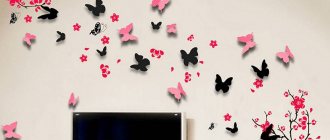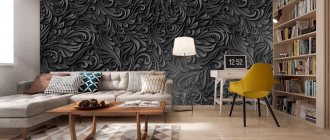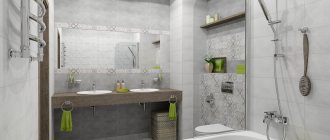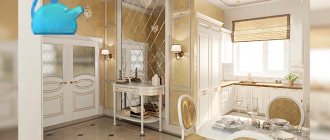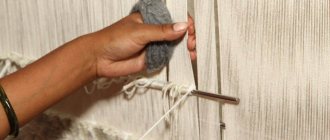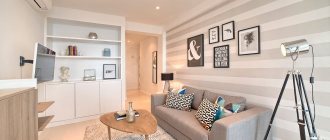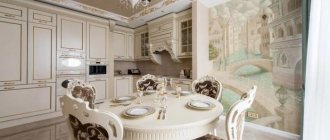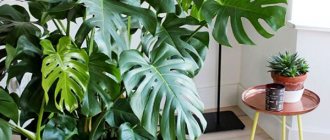Stencil drawing
The pattern can be applied to the wall using a stencil. This technique provides wide scope for imagination and makes it possible to play with the contrast of colors. This type of wall decoration is suitable for small format and monochrome designs. You can buy a stencil or prepare the outline yourself on a printer, which is then transferred to thick cardboard.
Stencil design is suitable for decorating stylish children's rooms, since the simple technology allows even children to work on interior decoration. Relief designs and classic elegant patterns in modern, retro and abstraction styles look very unusual.
Types of stencils
An ornament or pattern can be applied to any surface in the room and even to furniture. For this, specially prepared stencils or templates are used, which make it possible to cover the entire desired area with the same pattern. For painting, acrylic and waterproof paints of different colors are usually used, as well as spray paint.
Stencils come in various types:
- Single-color (1 tone of paint) - used for inscriptions, silhouettes and ornaments.
- Several shades or colors - allow you to draw pictures; the method is also used when applying the main and auxiliary drawing to highlight any part of it (the number of stencils is determined by the number of colors).
Related article: Stool decoupage - the correct technique
- Volumetric ornaments are made using putty; after drying, the protruding part can be additionally painted for a greater emphasis.
- Anti-stencil – when painting is done outside the border of the stencil and a silhouette of the drawing is obtained.
3D images
This work is performed with construction gypsum mixtures and spatulas. The solution is applied to the pre-drawn sketch where the volume is required. The process is akin to the work of a sculptor, and therefore requires patience and care. After the volumetric composition has dried, it can be painted, but this is not at all necessary.
Recommendations for drawing
Painting interior walls with your own hands is a very exciting, but labor-intensive process. The main rule when applying paint to a wall through a stencil is to take your time!
There are also a few more nuances that need to be mentioned:
- When applying, paint is taken a little at a time to avoid flowing beyond the boundaries of the drawing.
- When painting, the brush should be held perpendicular to the surface of the wall.
- It is better to apply paint by tamping so that the fibers do not get under the stencil.
- When using a sponge, try the very first print on unnecessary paper to remove excess paint.
- The roller is used when working with large ornaments and it is necessary to ensure an even application of the paint layer, paying special attention to corners and small details.
- When using a spray can, keep it at a distance of 30-35 cm from the surface, while making sure that the paint does not accidentally fall beyond the boundaries of the stencil.
- If the outline of the drawing turns out to be unclear, it is better to then finish it with a thin brush after removing the template.
- It is better to break large drawings into parts to avoid complications.
- The dimensional template is secured to the wall with construction tape or tape.
- Each subsequent color is applied only after the previous one has dried.
Related article: Original do-it-yourself photo frames (+50 photos)
Painting on decorative plaster
Textured and textured plaster is considered the ideal basis for an artistic composition. It makes it possible to create an original visual effect. Some of the works resemble a relief painting or an ancient fresco.
If you correctly combine the design and type of surface, the paintings will be as realistic as possible. This art requires experience and proper adherence to technology.
DIY wall painting
Here is a step-by-step master class on decorating walls with patterns. Before you start work, you need to prepare:
- tassels;
- a simple pencil;
- ruler;
- acrylic paints;
- varnish
After acquiring all the necessary materials, you can proceed to work.
- Select the image and the desired location in the house where it will be applied.
- Clean the surface of the finish, plaster and prime it. The main thing is to dry the surface well, leaving it for a day.
- An experienced artist can trace the design directly onto the wall using a ruler and pencil.
- The rest can choose any photo from the Internet. To transfer a drawing to the wall, it is best to draw the image into equal squares, and, increasing their scale, mark the same number of squares on the wall. After this, all you have to do is transfer the contents of each square to the corresponding segment on the wall in detail.
- Having completed the transfer of the ornament, take a fresh look at it, correct the shortcomings and roughness.
- Start coloring. To do this, mix white acrylic paint with colorants from separate cans on the palette.
- Only after you are sure that the composition is applied evenly can it be coated with matte varnish.
Important! It is better to dilute in advance in slightly larger quantities than needed, as it can be difficult to get the same shade a second time.
“Mural painting” is a special type of art, which has in its arsenal a lot of means for realizing the most daring ideas. Now you can easily experiment, creating an exclusive solution to change the appearance of your apartment.
Drawings in different rooms
In the living room
The city, natural and sea landscapes look beautiful here. Neutral pictures are selected for this room, creating a light, pleasant atmosphere.
In the bedroom
The drawings in this room should be conducive to calm and comfort, and therefore delicate pastel colors are chosen for the composition. The image may resemble clouds in the sky, birds of paradise, sakura branches, graceful butterflies. The main thing is to stick to warm and soft colors.
In the kitchen
Designers do not advise painting the wall near the stove here, so that the steam does not damage the work. Branches of fruit trees, ethnic ornaments and Scandinavian patterns look great in the kitchen.
In the bathroom
Given the high humidity, painting in this room is done with acrylic waterproof paints. Landscapes of the seabed, fountains, pearls, and Roman baths are suitable for painting.
In the hall
When guests cross the threshold of your home, they can see a stylish design created in the desired style. You can choose a natural picture, geometric motifs or an abstract pattern.
In the nursery
I can't think of a better room for drawing! But don’t forget that the child will have to look at it every day. Choose neutral colors.
See our photo selection and create a special interior in your home! Maybe you have other ideas on how to draw a picture on the wall for a non-professional? Write to us!
How to work with stencils
You can apply the design not only to painted walls, but also to wallpaper, plastic, glass, etc. That is, stencils for walls for painting can be used not only to decorate walls, but also to decorate furniture facades, for example. Only highly textured surfaces are not suitable. You cannot apply paint to them properly. All others are suitable. Moreover, acrylic paint is compatible with almost all. They can be in a jar or aerosol. The advantages of acrylic are known to everyone: the paint adheres well to both smooth and porous surfaces, dries quickly, does not fade for a long time, and has almost no odor. That is why stencils for painting walls are usually painted with acrylic paints.
Stencil painting on the walls can be of any theme
What to work with
If an anti-stencil is used, then paint is applied only from a can. You cannot achieve this effect with other tools (except perhaps a spray gun). When spraying paint, the can is located 25-35 cm from the surface to be painted. It is better to select the distance by doing a “pen test” on a piece of old wallpaper. This way you can accurately select the duration of paint dispensing, movement, and distance. And one more thing: when working with a spray can, it is necessary to additionally protect the areas adjacent to the stencil so that careless movement does not end up painting an unnecessary part of the wall.
You need to work with paint in spray cans carefully - its quantity is difficult to control
When working with all other templates, you can use:
- a piece of foam rubber;
- a brush with short and thick bristles;
- roller with sponge.
Stencil paint can be applied with a brush, roller or sponge
In any case, we take paint in limited quantities. If there is a lot of it, it will flow under the stencil and ruin the whole job. Therefore, after dipping the brush/foam rubber/roller into the paint, we squeeze it out well. The amount of paint can be checked by running it over an unnecessary sheet of paper/piece of wallpaper several times.
What and how to fix it
To prevent stencils for painting walls from moving, they must be fixed to the wall. There is a special glue for this. It is applied in a thin layer to the back of the stencil, after which it is attached to the wall. After completing the work, removing it is not a problem. Moreover, it does not damage the surface.
Another option is double-sided masking tape. Note! Masking tape is a must. Unusual. If you use a regular one, it will damage the wall - most likely, a piece of paint will remain on the tape. Or vice versa, part of the sticky composition will end up on the wall. Which is no better. But masking tape acts approximately like the glue described above: it holds well and does not leave marks after peeling off.
The stencil must be fastened securely, but in such a way that it does not damage the wall when peeled off.
Scotch tape is easier to buy and cheaper, so most people use it. We cut it into small pieces, remove the protective film on one side and glue it to the stencil. You need pieces in the corners - that's for sure, but they may also be needed in the middle of the long side of the sheet or somewhere else. It is important that the stencil holds well and there is no possibility of moving it.
The procedure for transferring a picture to the wall
You need to work with a stencil for painting walls like this:
- Preparing the surface. It should be dry and clean. Ideally, the walls have been recently painted. If this is not the case, clean them thoroughly. There should be no grease or any other stains. If you have to wash the wall, you need to dry it well. If you need to remove dust, you can do it with a vacuum cleaner and a long-bristled brush. Then take a slightly damp cloth and collect the remains. Leave to dry. Further work can be done only after the walls are dry.
Vertical or horizontal drawing - it doesn’t matter. It is important that it “fits” into the interior
- We apply a stencil to the wall, mark control points by which we will check the position of the stencil.
- Remove the protective film from the tape, align the control points, and glue it.
- Take a sponge/brush/roller, dip it in paint, wring it out, and paint over the details.
- Leave for a few minutes for the paint to dry. Carefully remove the stencil from the wall and clean off the paint.
Then, if necessary, we repeat the procedure. Next time you need to check whether the paint left over from the previous time has dried. Can only be used after complete drying. Dried several times, the paint forms a thick crust. This may cause it to flow between the stencil and the wall, or the shape of the design will change. Therefore, after several uses, remove the paint.
Features of working with a volumetric stencil
To create a three-dimensional image, you can use textured paint, putty, decorative plaster, liquid wallpaper and other similar compositions. You can find special formulations in stores, but they are very expensive. In this part, the choice is yours; all the compositions listed above are suitable.
All of the materials listed above have a paste-like consistency. There is no point in applying them with a brush or roller. You need a small spatula, preferably a flexible plastic one. If you don't have it, you can use a piece of any plastic. Even an old plastic card will do.
Working with a volumetric stencil
We take a certain amount of the composition on a spatula, fill the cavities with it, immediately removing the excess with the same card. At this stage, you need to make sure that there are no air cavities left and that the surface filled with plaster/putty is smooth. If you've ever worked with plaster, you won't have any problems. Everything is exactly the same.
After the composition has set, but before it dries completely, remove the stencil. In this case, the edges of the picture turn out torn and uneven. Don't be upset, this is normal. Don't do anything, just wait for it to dry completely. Now we take sandpaper with medium or fine grain (depending on the composition that was used) and sand all the nerves. In general, that's all. Then, if you want, you can color the resulting ornament, but that’s another story.
Drawings on the wall - ideas and design. Photo
Where can you use a wall ornament?
The main effects that can be achieved by creating an ornament on the wall are originality and aesthetics. As a result, it can be unequivocally stated that the scope of application is allowed in any room. Patterns on the wall will look appropriate in:
- Living room;
- bedroom;
- children's;
- corridor;
- in the bathroom.
But, despite its widespread use and the possibility of implementation in any room, there are still certain requirements that must be complied with. And the main one is a large surface area free from cabinet furniture, shelves, TV and other things that can cover the space.
The main effects that can be achieved by creating an ornament on the wall are originality and aesthetics.
Tips and tricks for creating wall art
At the initial stage of work, it is necessary to choose the right theme for the stencil and the general style direction of the room.
For a bathroom, toilet or combined bathroom, the marine theme remains traditional. Purchased or manufactured templates are placed at the desired points on the wall and then painted.
To lift the mood, stencil patterns can be applied to the toilet lid on both sides.
For a bathroom, toilet or combined bathroom, the marine theme remains traditional.
For a corridor, a floral or plant theme with an asymmetrical pattern, not too thick with an abundance of elements, is suitable.
A floral or plant theme with an asymmetrical pattern is suitable for the corridor.
In the kitchen, it is better to use multi-colored patterns in combination with neutral walls and ceilings. This creates a modern interior direction that combines minimalism and original color accents. But, in contrast to this combination, in the kitchen you can also use stencils that imitate a wide variety of majolica or Gzhel tiles. In this way, you can create an ethnic atmosphere in this part of the home.
In the kitchen, it is better to use multi-colored patterns in combination with neutral walls and ceilings.
Figurines of various animals or cartoon characters are suitable for a children's room.
Figurines of various animals or cartoon characters are suitable for a children's room.
For an adult bedroom, original geometric patterns in modern interiors and floral patterns in the shabby chic or Provence style are better suited.
For an adult bedroom, original geometric patterns in modern interiors are better suited.
In the living room, the flight of imagination is not limited to anything. It all depends on individual preferences and desire to get one or another result.
In the living room, the flight of imagination is not limited to anything.
If you are concerned that you will not be able to create a stylish motif, it is recommended to apply black or white patterns on the wall. They look laconic and, at the same time, quite stylish.
If you plan to build an arch, you can initially design it in such a way that the design is compatible with it, which will affect not only the front surfaces, but also the end width of the structure.
Black or white patterns on the wall look laconic and, at the same time, quite stylish.
The stencil method of drawing allows you to implement a wide variety of ideas in the space of any living space. The advantages of this method are that it can be used for different styles.
Various purposes of stencils
Naturally, the choice of stencils depends on the purpose of the premises and for this you can pay attention to universal designs representing geometric patterns, landscapes, as well as flora and fauna. There are drawings that can fit into the interior of any room decorated in the style of romantic Provence, minimalism or chic classics. In this case, you should pay attention to the selection of colors. It is very important that it harmonizes and complements the overall design of the room.
Complementing the design with a pattern
Images of a neutral nature go well with other rooms, such as a corridor, living room, dining room, etc. Such images will appeal to owners of any age. The most suitable are drawings representing elements of nature.
There are also specific types of stencils designed for decorating bedrooms and children’s rooms. There are stencils on various themes, which allows you to tastefully decorate your office, men's or women's bedrooms, children's rooms, and kitchens. As a rule, when decorating a kitchen, preference should be given to drawings that represent products or food.
To decorate children's rooms, pictures with images of characters from various cartoons, fairy tales or stories are often used. In other words, there are all possibilities for decorating premises of any purpose, according to the spirit of the times and wishes.
Pay special attention to the paint composition when decorating walls in children's rooms.
When removed, it will damage the surface of the wallpaper.
A good solution may be to use stencils - stickers. Such products are specially designed for safe fastening and removal of wallpaper from the surface; * use paints exclusively for interior work. Pay special attention to the paint composition when decorating walls in children's rooms. Michail Rybakov Wall painting will give the room an unusual stylish and even chic look. This is the finest and truly amazing technique for decorating walls and looks much richer than any glued-on finishing parts. You can paint the walls with paintings of a wide variety of themes and complexity. Walls depicting fairy-tale cartoon characters and masterpieces in the form of landscapes and still lifes also look great. (Fig. 13)

